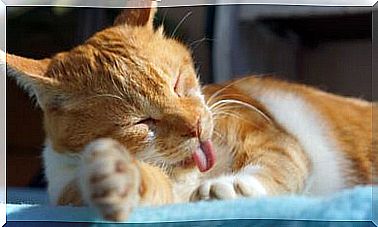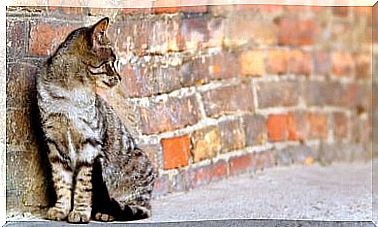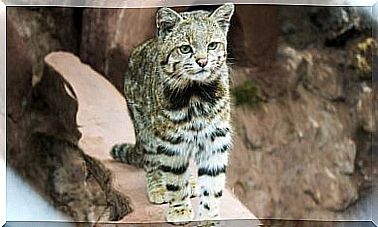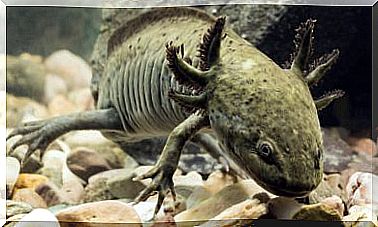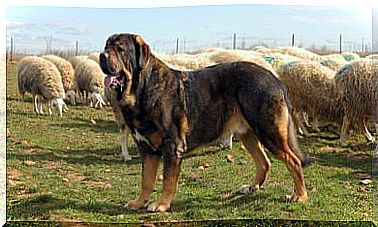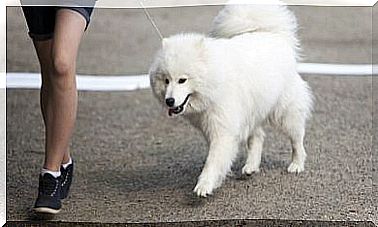The Lynx In The Iberian Peninsula: The Most Threatened Feline In The World
The lynx in the Iberian Peninsula has been in critical danger of extinction in recent decades. We introduce you to this unique feline and we tell you the story of his recovery.
Characteristics of the Iberian lynx
The Iberian lynx is a medium-sized feline, although it is small compared to other species of lynx. Adult males are slightly larger than females: they weigh around 10 kilograms and they grow up to 13 kilograms.
They have a short tail, ending in a black tassel, which is always raised. They are brown or gray speckled in black and white; these spots can be of different sizes and intensities.
However, the most characteristic physical feature of this lynx is the brushes on the tips of its ears : they help it camouflage itself and are made of thick black hairs. Two white sideburns dangle under his cheeks and grow larger with age.
In proportion, they are graceful-looking animals with long legs. They are intelligent species that live in groups. They are great hunters, although they act alone and do not develop collective strategies, like other specimens.
Feeding of the Iberian lynx
The Iberian lynx is a carnivorous animal. 90% of their diet is made up of rabbits, although this proportion can change depending on the season of the year.
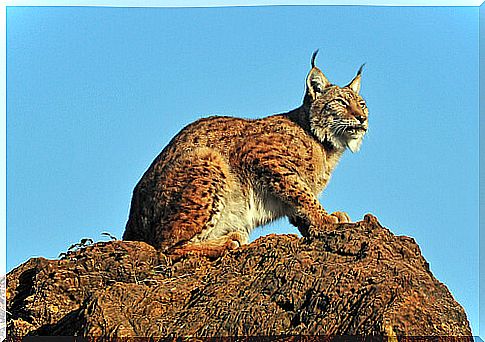
During the summer it feeds almost entirely on the rabbits it hunts, but in winter, when there are declines in the lagomorph population, it looks for other prey. Other small mammals or small birds also have a place in its diet, but it has even been seen hunting baby goats or fawns.
One of the problems in the conservation and recovery of the Iberian lynx is in its diet: since it is so selective with its prey, it needs a habitat where they abound. In addition, the diseases that appear in their prey are also cause for alarm for their survival.
Habitat of the Iberian lynx
The Iberian lynx lives in the Mediterranean forest: places that are characterized by being not very steep, with large areas of flat terrain, many bushes and low grass. Without being affected by human action, there are few places like this left in the Iberian Peninsula.
A few decades ago, the lynx lived in Andalusia, Sierra Morena and Sierra de Gata in Spain, and in southern Portugal. During the early years of the 21st century it became extinct from many of these places. Currently, it survives mainly in Andalusia, concentrated in the natural park of Doñana and has been reintroduced in Sierra Morena.
However, other habitats are being prepared to be able to introduce it in them and thus achieve the expansion of the species : the Guadiana valley in Portugal is being conditioned. When there are stable populations of rabbits, and human action disappears in those places, it is planned to expand them.
Progress in recovery
During the early years of the 21st century, the lynx had such a low population that the species was placed in critical danger of extinction: it was estimated that there were less than 100 specimens left. Fortunately, conservation efforts are bearing fruit and there are now more than 500.
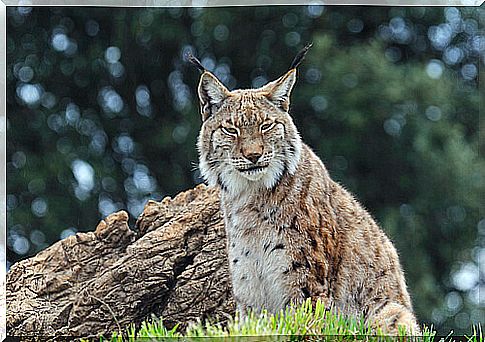
To achieve their recovery, different projects are being carried out: their way of life is being studied in depth to condition new habitats, but captive breeding is also taking place to ensure reproduction.
In addition, they have been reintroduced in places where they had disappeared. This step has been a success, since free births are taking place without human intervention. In some areas, numerous hidden cameras have been installed in order to know exactly how they live and what problems they face.
Threats to the lynx in the Iberian Peninsula
Despite the optimistic data, it should not be forgotten that the lynx in the Iberian Peninsula is still in danger of extinction. 2017 and 2018 were years in which there were many births, but also many accidental deaths that could have been prevented.
Currently, the greatest danger of death for Iberian lynxes is being run over, as there are secondary roads that cross part of their habitats. In addition, traps set up for other animals, such as foxes or rabbits , are worrying because they also fall into them.
The Iberian lynx is the most threatened feline in the world, but it is in the process of recovery. It is being careful and slow work, but the data for the last decade seems optimistic.
